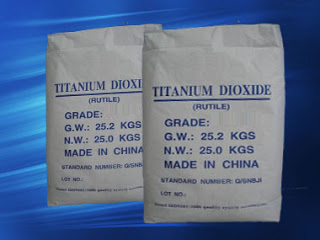Within the depths of the Earth, several minerals have been discovered. Scientists and chemists continue to explore the vast dimensions of our world to find something useful and beneficial to humanity. One of the discovered minerals is titanium dioxide. Titanium dioxide occurs naturally within the soils of the Earth. It has a whitish and opaque appearance. This mineral is said to be as old as the Earth itself. According to statistics, it is also one of the top 50 chemicals being produced worldwide. There are two main forms of titanium dioxide, rutile and anatase.
To obtain the pure whitish form of titanium dioxide, it needs to undergo a series of chemical processes. Titanium dioxide is an odorless and absorbent mineral. Due to its innate properties, it has several uses. The paint and cosmetics industry benefit greatly from this naturally occurring mineral. In the field of cosmetics, titanium dioxide serves as a white pigment, a sunscreen, and an opacifier. Nevertheless, issues regarding the use of titanium dioxide have risen because it is a potential photocatalyst and carcinogen which can be very harmful to the human body.
Rutile titanium dioxide is the most common form. It is preferably used in interference applications because of its high refractive index. It is also hard and has chemical resistant properties. The natural rutile is composed of ten percent of iron and traces of niobium and tantalum. “Rutile” comes from the Latin word “rutilus” which means “red.” When viewed by transmitted light, the rutile exhibits a deep red color. Rutile has many significant uses. In beach sands, if there is a large quantity of rutile, it serves as an important component of heavy mineral sand ore deposits. These sand ore deposits are eventually extracted to get the rutile mineral for the production of refractory ceramic, titanium metal, and pigment. The powdered form of rutile serves as white pigmentation for paints, paper, plastics, foods and other objects which need a white color. The nanoscale rutile particles are also used for the effective absorption of ultraviolet rays. With this characteristic, rutile is mixed to produce sunscreens and to prevent skin damage. Gems come with greater value if there is rutile among them because rutile can make an optical phenomenon known as asterism.
Anatase is a type of polymorph which becomes a rutile when it is exposed at about 915 degrees centigrade. Its color is brown to black or yellow to blue. Anatase is the rarest form of titanium dioxide, but it has almost the same properties as rutile with regards to its hardness, density, and luster. However, you can distinguish the two minerals apart by their cleavage and crystal habit. Both anatase and rutile are tetragonal in structure, but the anatase has octahedrons that share four edges forming the four-fold axis. Quartz is usually associated with streaks of anatase. Quartz plus anatase make them a popular collection for gems and mineral collectors since these minerals exhibit wonderful lusters. Anatase is also used for the white pigmentation of paints, paper, and ceramics, but it is not advisable to use it outdoors because of its lower absorption rate than rutile.
Summary:
- Titanium dioxide has two forms: rutile and anatase.
- Rutile is deep red while anatase is yellow to blue.
- Rutile has a high absorbance property than anatase.
- Rutile and anatase are both used in the white pigmentation of paints, paper, and ceramics.
- Sunscreens contain rutile because of its absorbance of ultraviolet rays.
- Issues have risen regarding titanium dioxide as being carcinogenic.
- Rutile and anatase provide extra luster to other gems and minerals since they are capable of asterism.







Get Social